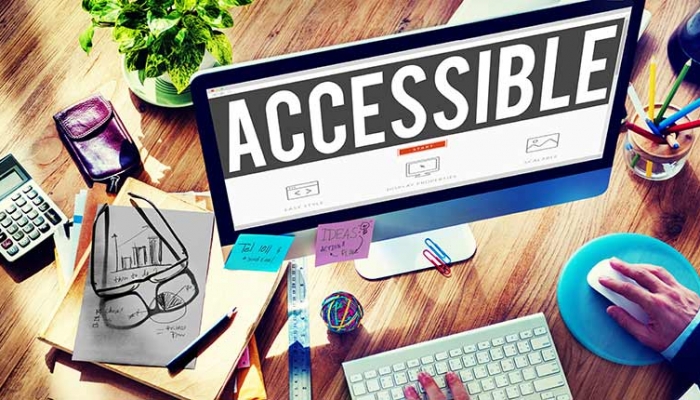Why creating inclusive and accessible events is vital
Flashback to April 2020 where team meetings were swapped for video calls and panic-stricken events professionals around the world raced to take conferences, awards and tradeshows online.
We’re now back to ‘normal’ in the world of events but it’s important that we don’t forget the positives that came out of enforced virtual events.
Accessibility, accessibility, accessibility
As events all shifted online they became accessible to more people. No longer restricted by costly travel, inaccessible venues and lengthy time out of the working day, virtual events allowed people to consume the same content without leaving their house.
With the return to in-person events it’s clear that people have missed human interaction, and no virtual networking will ever equate to chatting to peers during a coffee break. However, it’s important to keep the accessibility progress that was made during the pandemic front of mind when planning in-person events.
Check when planning:
- Does the venue have good disabled access? Is there a hearing loop?
- Is the venue easy to get to on public transport?
- Where is my audience coming from? Will travel costs impact attendance?
- Is it possible to live-stream or record the event for a virtual audience?
- If catering is needed, are all dietary requirements covered?
- Creating events that are more accessible results in a more inclusive event which in turn fosters a wider audience and better discussions.
Work/life balance
Hybrid working has taken the place of the office for many with people valuing the work/life balance the pandemic gave them.
Being respectful of your audience’s time now needs to be worked into any event you’re planning. Whether it’s virtual or in-person, diaries are full so be mindful of the time you’re asking people to give up. Understanding your audience’s working habits is useful when planning, e.g. what days do they go into the office?
Ask yourself when planning:
- Does the start/finish time allow for people to do the school-run, if needed?
- Will the day of the week work for the audience?
- Is the content as efficiently planned as possible?
- Can you offer both in-person and virtual tickets?
- If the event is over several days, can you provide single-day tickets?
- Is it possible to record the event?
Virtual audiences matter
The webinar has become a key tool in every comms and marketers’ kit, providing a cost-effective way to communicate regularly with your audience.
Make sure you are not overlooking your virtual audiences and that these events are as inclusive as your in-person events, both in accessibility and representation. There are tools available that can help with subtitles, recording and editing so no matter who or where your audience are watching the webinar, everyone can enjoy the content.
Virtual events allow for plenty of engagement either with visual and audio or just audio but keep in mind that not everyone in your audience will feel comfortable contributing in a virtual event setting. Giving your guests the option to use their camera or not will make them feel more at ease and able to enjoy the event.
Check:
- Is there subtitle functionality on the webinar platform and is it enabled?
- Are you recording the webinar? And does the recording have subtitles?
- Is your speaker line-up inclusive?
- Does the time work for your audience based their time zone?
- Is the sign up page accessible for the visually impaired?
Review and refine
Keep track of what works and what doesn’t so you can keep amending your events to make them as accessible and successful as possible. Look at the data from your sign ups to who shows up and always ask your audience for feedback to help you improve.
Test regularity, time, day and length of your virtual events. Many people suffered from ‘Zoom fatigue’ during the lockdowns so keep this in mind when deciding the length of your webinar or virtual event.
The world of events has changed for the better over the past two years, becoming more accessible and inclusive so more people can learn, network and grow without the restriction of geography, budget or lack of time.
Creating accessible events increases your audience and shows that you care about them and their experience.
For more on virtual events, read our previous posts with tips for moving your event online, why virtual events are more important than ever, and even video call etiquette for when you’re joining from home.



Leave a Comment